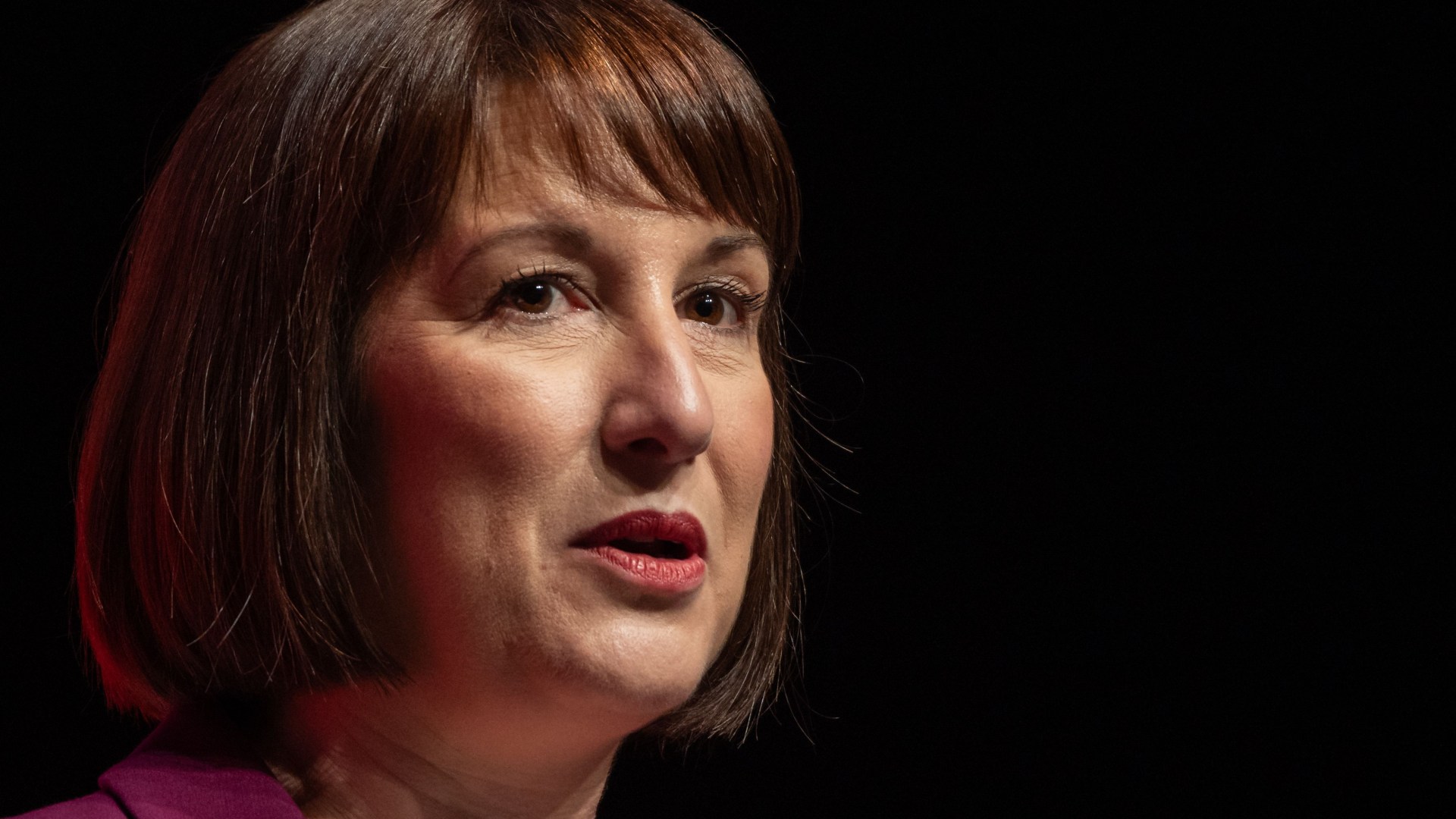Welcome to FT Asset Management, our weekly newsletter on the movers and shakers behind a multitrillion-dollar global industry. This article is an on-site version of the newsletter. Subscribers can sign up here to get it delivered every Monday. Explore all of our newsletters here.
Does the format, content and tone work for you? Let me know: harriet.agnew@ft.com
One thing to start: Marc Rowan, co-founder of Apollo Global, believes we are on the cusp of a new era in finance, as asset managers replace banks as the vital cogs in the flow of credit. Don’t miss my colleague Antoine Gara’s profile of the man with a plan to remake Wall Street.
In today’s newsletter:
-
How Jane Street rode the ETF wave to ‘obscene’ riches
-
China’s foreign investors hope stimulus will end ‘deep winter’
-
Investors grab European equities to gain cheap US exposure
New titans of Wall Street: Jane Street
When Wall Street scrambled to launch bitcoin funds earlier this year, there was just one trading company named in regulatory filings as an anchor market-maker for every single one: Jane Street.
The move underscored how a quirky and opaque New York firm has used its dominance in exchange traded funds and embrace of more finicky financial securities as a springboard to become the most profitable of all the trading firms that are now a significant force in markets.
In the latest instalment of our new titans of Wall Street series, Will Schmitt in New York and Robin Wigglesworth in Oslo bring you the story of Jane Street’s rapid expansion.
Last year was the fourth straight year that Jane Street generated net trading revenues of more than $10bn, according to investor documents. Its gross trading revenues of $21.9bn were equivalent to roughly one-seventh of the combined equity, bond, currency and commodity trading revenues of all the dozen major global investment banks last year, according to Coalition Greenwich data.
“The amount of money they make is almost obscene. And that comes from handling instruments that many other people don’t want to touch,” said Larry Tabb, a longtime analyst of the industry who now works at Bloomberg Intelligence. “That’s where the greatest profits are, but also the greatest risks.”
There are no signs of Jane Street slowing down. In the first six months of 2024 net trading revenues rose another 78 per cent year-on-year to hit $8.4bn, according to people familiar with the matter. If it can match those revenues in the second half of 2024, it would mean Jane Street bringing more trading revenues than the vastly larger Goldman Sachs did last year.
If the 70 per cent profit margin disclosed in documents to investors is also maintained, it would mean Jane Street comfortably out-earning the likes of Blackstone or BlackRock this year, according to analyst forecasts collected by LSEG. Read the full story here
China: ‘Groundhog Day or a fresh dawn?’
When news of China’s latest policy blitz to tackle its flagging economy and sagging capital markets broke last month, the initial reaction from many foreign investors — some of whom had been burnt by previous policy-led rallies — was one of caution.
“Groundhog Day or a fresh dawn?” is the question posed by a Lombard Odier research note following the initial briefing from Chinese financial authorities, writes Arjun Neil Alim in Hong Kong.
But as the market digested the unprecedented measures proposed by Beijing to support capital markets — including a $100bn war chest to lend to non-bank financial institutions to buy equities and to companies to buy back their own shares — caution turned, in many cases, to FOMO.
While the details of any further fiscal stimulus are yet to come, the change in sentiment towards China has been notable. David Tepper, founder of Appaloosa Management, summed up the bullish mood with his call on CNBC: buy “everything” in China.
“When Xi Jinping gets involved you know the answer is unlimited support” for the stock market, said Beeneet Kothari, founder of hedge fund Tekne Capital Management.
“We anticipate that [global] funds will need to restore their Chinese investments to a more rational level,” added Yu Chen Jun, deputy chief investment officer for equities at Value Partners.
For now it looks like foreign investors are buying the rally, sending mainland Chinese equities and Hong Kong’s Hang Seng index soaring.
Yet while some global investment banks are cautiously starting to raise their target prices and allocations for Chinese equities, others are holding off jumping into the “everything” China trade.
“Is this time different? We have seen these fits and starts where China puts in place some kind of stimulus and it has not resulted in a long-term constructive recovery,” said Saira Malik, chief investment officer of $1.3tn US asset manager Nuveen.
“This time it still looks to us that its impact is greater for the stock market than the economy. Before we became more structurally bullish we’d be looking for more follow-through in terms of a pick-up in economic activity.”
Chart of the week
Investors seeking returns from the buoyant American market are turning to European stocks which have significant US exposure but are trading at a discount to their transatlantic counterparts, writes Rafe Uddin in London.
Groups such as UK defence group BAE Systems, France’s Schneider Electric and pharmaceutical giant Novo Nordisk are among the big European names that have risen sharply this year as investors hunt for cheaper, similar versions of top-performing US companies.
BAE has risen 17 per cent, Schneider is up 29 per cent and Novo Nordisk has gained 11 per cent.
“The fact you’re able to get these businesses at a lower valuation is being overlooked,” said Dev Chakrabarti, chief investment officer for concentrated global growth at AllianceBernstein, which holds positions in several Europe-based companies with large US exposure, including SAP.
“That’s a pricing inefficiency that we continue to exploit, and we do expect to get paid on that inefficiency,” Chakrabarti added.
Friday’s strong US jobs data strengthened investors’ expectations that America will pull off a so-called soft landing, in which inflation falls rapidly but it maintains robust growth and strong employment. However, sentiment for the outlook in Europe has been more negative, where business activity has slowed as inflation has fallen.
Dozens of large European companies generate the bulk of their sales in the US. Novo Nordisk, which makes the best-selling Ozempic and Wegovy weight-loss drugs, earns close to 60 per cent of its revenues from the US, while the market is nearly 50 per cent of defence giant BAE Systems’ turnover.
Five unmissable stories this week
Wall Street is warming to US presidential candidate Kamala Harris after weeks of behind-the-scenes courting between donors and her campaign, even as some executives still lean towards Donald Trump and his plans for deep tax cuts.
John Kerry, the former US secretary of state and climate envoy, has joined billionaire fund manager and big Democratic donor Tom Steyer’s green investment group Galvanize Climate Solutions as co-executive chair.
Charles Schwab’s longtime chief executive Walt Bettinger, who oversaw its growth following the 2008 financial crisis, will retire at the end of the year and be replaced by the company’s president Rick Wurster.
The Bank of England has warned of rising “vulnerabilities” in the financial system stemming from increased bets by hedge funds against US government bonds, which reached a record high of $1tn in recent months.
Some of the UK’s largest wealth managers, including Quilter, AJ Bell and Hargreaves Lansdown have warned chancellor Rachel Reeves that people are pulling money out of their pensions early because of “uncertainty” over potential tax changes in the Budget.
And finally

René Magritte’s mesmerising L’empire des lumières is the centrepiece in the upcoming sale of the collection of designer and philanthropist Mica Ertegun at Christie’s. Magritte himself said of the series in 1956:
“The conception of a picture, that is, the idea, is not visible in the picture: an idea cannot be seen with the eyes. What is represented in a picture is what is visible to the eyes, it is the thing or things that must have been ideated. Thus, what are represented in the picture The Empire of Light are the things I ideated, ie a nighttime landscape and a sky such as we see during the day. The landscape evokes night and the sky evokes day. I call this power: poetry.
If I believe this evocation has such poetic power, it is because among other reasons, I have always felt the greatest interest in night and in day, yet without ever having preferred one or the other. This great personal interest in night and day is a feeling of admiration and astonishment.”
Thanks for reading. If you have friends or colleagues who might enjoy this newsletter, please forward it to them. Sign up here
We would love to hear your feedback and comments about this newsletter. Email me at harriet.agnew@ft.com




















































































































































You must be logged in to post a comment Login